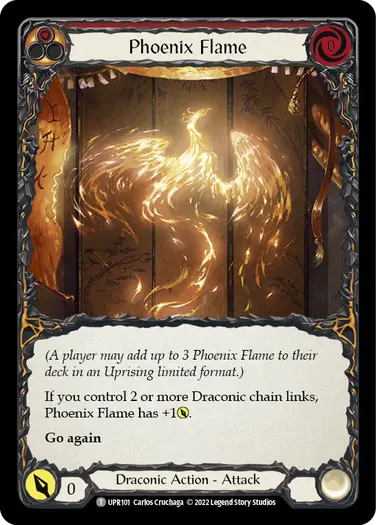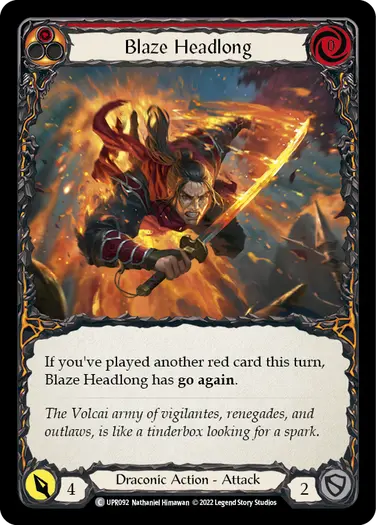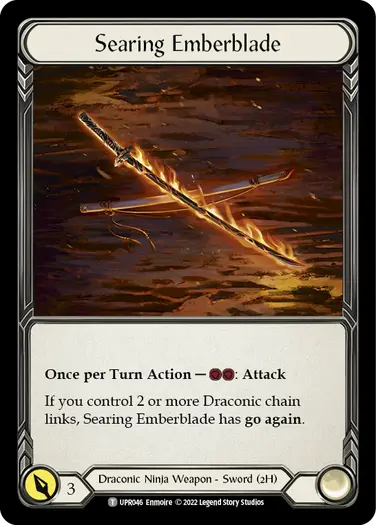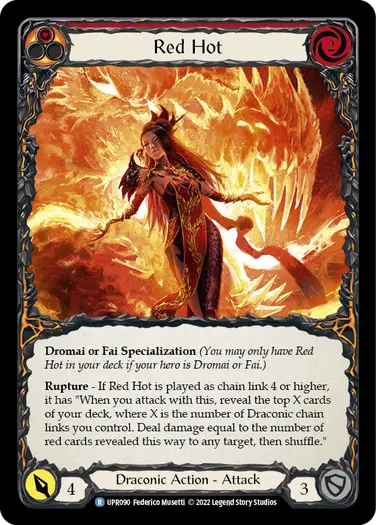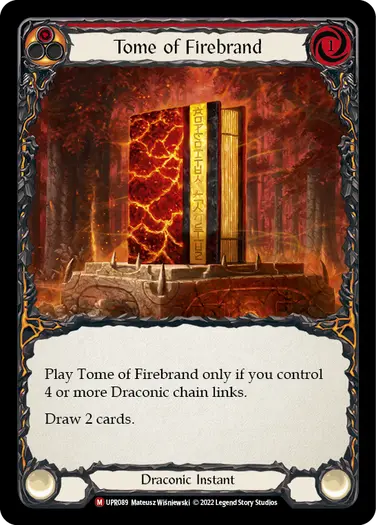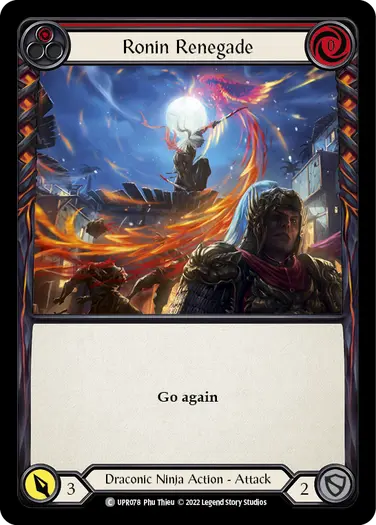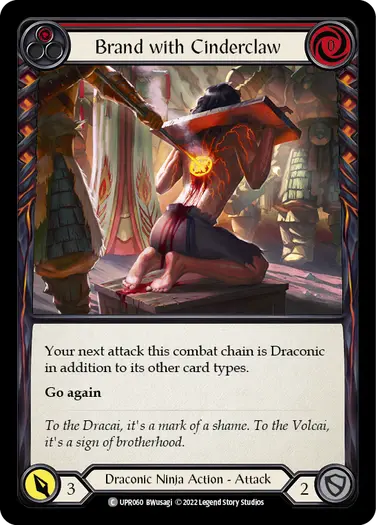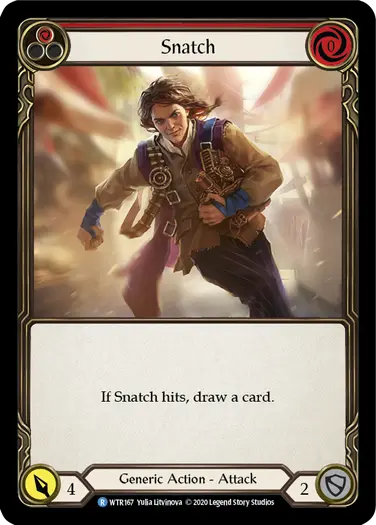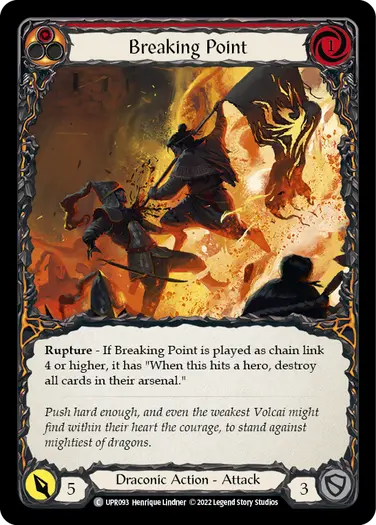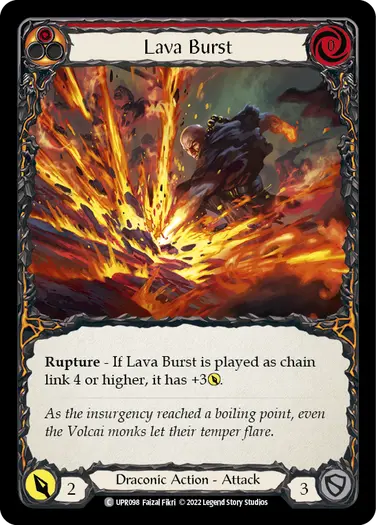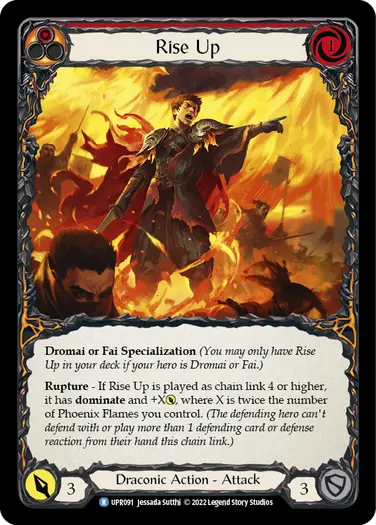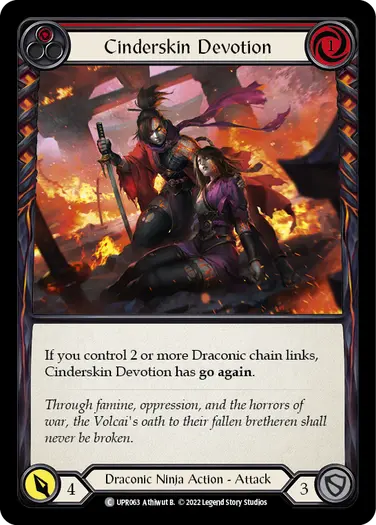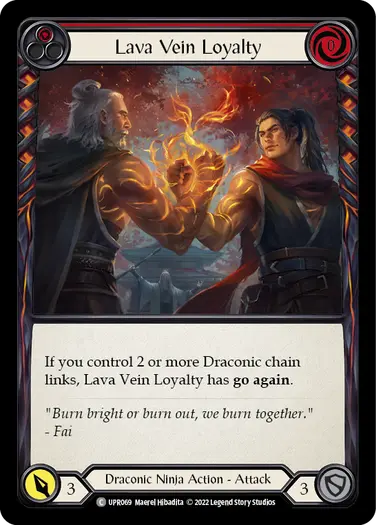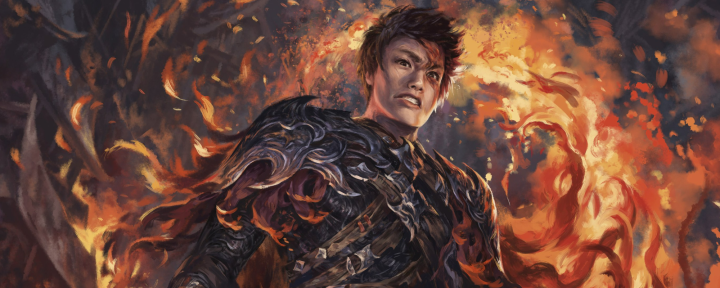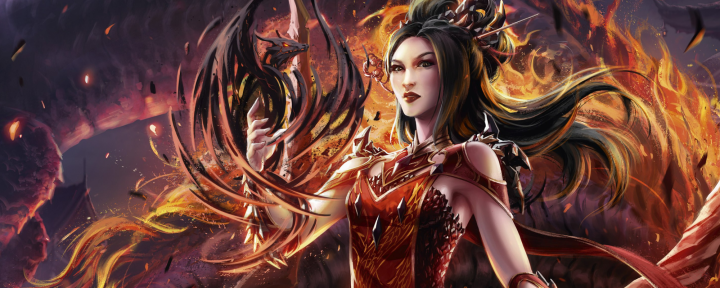Basics of Constructing a Fai Deck
Fai is the first talented Ninja hero in Flesh and Blood – a Draconic Ninja. The Draconic talent reflects aggression, passion, but also brotherhood and synergy. Rupture is the signature mechanic of the Draconic talent. It is the basis of how the Draconic talent generates value and luckily, Fai, as a Ninja, enables Rupture with ease. Another key characteristic of the Draconic talent is 'Red pitch matters'. All of the Draconic cards come only in the Red pitch and many Draconic abilities rely on either playing or pitching Red cards.
When constructing a Fai deck, there are a few things we should keep in mind and answering some of the following questions can help to guide us through deck construction; Are we focusing on maximising the amount of chain links we control? Do we want to enable Rupture? Are we ok with giving up defensive capabilities for extra aggression? Do we want to maximise the amount of Draconic cards in the deck ,or opt for a more generic build? How important are Phoenix Flames to our strategy?
Phoenix Flame
is at the core of how Fai operates, as his hero ability revolves around the card. Returning a Phoenix Flame more often than not results in a “free” point of damage and an extra chain link. The hero ability encourages us to get up to 3 Draconic chain links, so we can return the Phoenix Flame free of cost. This in itself shows that Fai functions best with 3-5 card hands, as it’s hard to return a Phoenix Flame with only 2 cards in hand. Also, we are encouraged to prioritise Draconic cards to reduce the cost of returning Phoenix Flame and ensure it has an attack value.
Draconic Cards Matter
Many Draconic cards get powered up thanks to other Draconic cards. This reflects the idea of brotherhood and building up the Draconic synergy. This creates an interesting deckbuilding constraint. The more Draconic cards we play, the more synergistic our deck feels, but we miss out on the raw power of other Ninja and Generic cards. Cards like Red Hot and Tome of Firebrand thrive in Draconic heavy builds, but would not be as powerful with many non-Draconic cards. This constraint is intrinsically linked to Fai as a hero, because of Phoenix Flame and Searing Emberblade. If we want to maximise on the Draconic subtype, we might want to value cards like Red Ronin Renegade over cards like Red Scar for a Scar, just to enable the Draconic synergies.
On the other hand, we could choose to forego the Draconic synergies and run cards like Enlightened Strike, Scar for a Scar and Snatch and rely on the raw power of these options. This decision ultimately affects the weapon choice for our deck. Searing Emberblade is amazing in a Draconic heavy build of Fai, while Harmonized Kodachis work well at generating extra chain links in a more Generic-heavy version of Fai. Brand with Cinderclaw is a great enabler that allows us to benefit from the Draconic synergies, while also using impactful cards that are not Draconic and it can even turn your Kodachi into a Draconic attack.
Personally, I would recommend starting off with a Draconic only Fai deck. You can familiarise yourself with how it operates then slowly adjust your list with more Ninja and Generic cards as you get comfortable with the deck’s play patterns.
Rupture
Rupture reflects the compounding buildup of power to blow up on your opponent. It is the core pay-off mechanic for the Draconic talent. By getting up to that 4th chain link, we can create huge blow out plays. Fai, as a Ninja, has a natural ease at getting to the 4th chain link. The Phoenix Flame helps as well. However, we should be quite selective of the Rupture cards we want in our deck, because none of the Rupture cards have go again. The more Rupture cards we have in the deck, the harder it becomes to get to that 4th chain link. It becomes a natural deck building constraint. Another thing to note is that the cheaper our Rupture card is, the easier it is to play out. The difference between playing out a Lava Burst on chain link 4 is huge compared to something like a Red Hot. The good thing about Rupture cards is that they do not require the chain links to be Draconic. We can just as well get to Rupture in a Draconic-heavy deck as a Ninja and Generic Kodachi Fai build.
I would recommend starting off with only a couple of low cost Rupture cards, like Lava Burst in your first Fai deck, to see how it plays out and then gradually make adjustments as you get more familiar with the play patterns of the cards.
Offence Versus Defence
Fai is a hero with enormous offensive potential. With access to lots of attack options with natural go again, he can consistently pressure opponents’ life totals. However, all cards with natural go again defend for 2. The more attack action cards with natural go again we play, the weaker our defence becomes. This is another deckbuilding dilemma this new Ninja faces. We can run cards like Cinderskin Devotion and Lava Vein Loyalty to make the deck more defensive, but we run the risk of drawing hands that cannot go wide, especially when we run lots of Rupture cards as well. Sometimes offence is the best defence and our naturally high damage output will be enough to put our opponent on the back foot, but it is important to understand this trade off.
I hope this article outlines the basics of how Fai operates and what deckbuilding nuances the hero has. There are a lot of subtle interactions that Fai has access to, that I will leave for you to explore and discover. Finding the right balance between Red cards and Blue pitch cards, a good balance between attacks with natural go again and ones that defend well, the ratio of Rupture to non-Rupture cards and the ratio of Draconic to non-Draconic cards is all part of the discovery process in Fai’s deck construction. I hope you are up for the challenge to play around with all these ratios and find a well balanced Fai deck. Once you become familiar with the hero, I’m sure it will turn out to be a well-tuned killing machine.

